New greenhouse supports research on yellow rust in Nepal
December, 2004
On December 1, CIMMYT handed over a greenhouse to the Plant Pathology Division of the Nepal Agricultural Research Council (NARC). Built with the support of CIMMYT’s project on foliar pathogens and funded by Belgian Development Cooperation (DGCD), this greenhouse will help sustain research on wheat diseases, despite Nepal’s current social conflict.
At a ceremony in Khumaltar, CIMMYT regional pathologist Etienne Duveiller delivered the greenhouse keys to T.K. Lama, Chief of the Plant Pathology Division. The new facility will help NARC scientists screen for resistance in wheat against yellow rust, a potentially devastating disease in the hill areas of Nepal. Grain losses can soar to 30% when early outbreaks occur, as demonstrated by last year’s severe epidemic in parts of the Kathmandu Valley.
Replacing Outmoded Resistance
Due to the breakdown of resistance in popular varieties like Sonalika, which date back to the Green Revolution, yellow rust epidemics have occurred in Nepal since the mid-1980s. In 1997, a new strain of the rust pathogen became prevalent in the Nepal hills—a strain that is virulent against Yr9, a gene from rye that has conferred resistance to yellow rust in many improved wheats.
To develop disease resistant plants, breeders artificially inoculate fields of experimental varieties and select the individuals or families that survive and produce grain. With help from CIMMYT, advanced lines from Nepal are tested annually in Pakistan to ensure that promising genotypes are exposed to new pathotypes of yellow rust from western Asia. But research of this type in Nepal has suffered in recent years, mainly from a lack of inoculum to apply to experimental plants. First, insecurity in Nepal has caused severe financial constraints and reduced operations for national agricultural research scientists. Second, there is a lack of proper facilities to produce rust inoculum for the timely inoculation of breeders’ fields. An alternate approach used—collecting natural inoculum that survives in off-season wheat crops—became nearly impossible after a series of dry years eliminated this source of the pathogen and security restrictions made travel impossible in remote hilly regions. Finally, less than optimal moisture in the screening fields of Khumaltar, where the Plant Pathology Division is located, has necessitated repeated applications of fresh inoculum.
The timely production of inoculum in the new greenhouse will improve this situation. This greenhouse has a robust and simple cooling system to control temperature, as well as a misting system that guarantees proper humidity. It will allow both screening against yellow rust under optimal conditions and the multiplication of inoculum. Since the wheat season is just starting, researchers working on other diseases and crops will benefit from having inoculum ready for breeders’ plots in January.
Preserving Spores and Global Partnerships
In an important recent accomplishment, according to Duveiller, Senior Wheat Pathologist Sarala Sharma was able to produce fresh inoculum directly from leaf samples collected last season, using local methods and dried leaves. “This is the first time that she was able to preserve inoculum from last March,” says Duveiller. “Yellow rust must be kept alive for multiplication in the greenhouse and cannot be grown on artificial media. The main problem is that it is very sensitive to high temperatures. In Nepal, power failures, poor refrigeration, and no possibilities of vacuum preservation make it hard to keep spores.”
During the greenhouse opening ceremony, Sharma underlined the importance of the long-standing collaboration between NARC and CIMMYT. She acknowledged CIMMYT’s continuous support, initiated by former CIMMYT wheat pathologists Jesse Dubin and the late Eugene Saari, who encouraged scientists to collect inoculum from rust-prone areas as a way to record the disease’s incidence and spread. These surveys had continued with support from Duveiller until recently, when traveling by road became difficult. Also recognized at the ceremony were the benefits of training on yellow rust pathotyping that Nepali scientists had received at IPO-Wageningen, the Netherlands, and Shimla, India.
CIMMYT wheat pathologist, Etienne Duveiller, with colleagues in Nepal.Similar work may become possible now in Nepal, according to Duveiller. “This greenhouse, built with Indian technology and including inexpensive but sturdy polyethylene sheets for siding, is another example of the importance CIMMYT ascribes to rust diseases on wheat in Nepal and south Asia,” says Duveiller. The center recently funded the installation of a sprinkler system for use in disease resistance experiments at Bhairhawa farm in the Tarai Plains, where the Nepal Wheat Research Program is based.
The greenhouse handover ceremony was combined with the farewell party for two NARC pathologists who retired recently, K. Shrestha and C.B. Karki. A recognized rust pathologist and longtime CIMMYT friend, Karki received his Ph.D. from Montana State University and attended the second Regional Yellow Rust Conference in Islamabad, Pakistan, in March 2004. Dr. K. Shrestha attended CIMMYT’s conference on helminthosporium blight in Mexico.
For more information: e.duveiller@cgiar.org
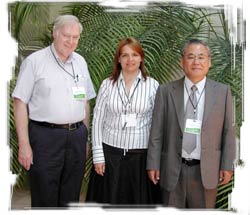 Keepers of worldwide maize germplasm collections meet at CIMMYT to see how they can work together to protect and conserve these resources.
Keepers of worldwide maize germplasm collections meet at CIMMYT to see how they can work together to protect and conserve these resources.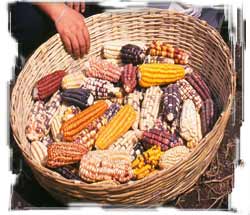
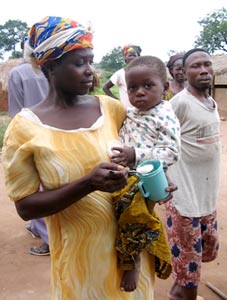
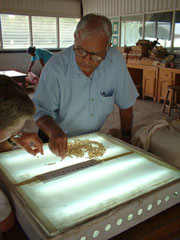
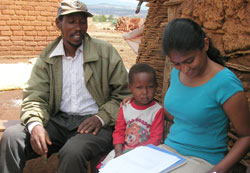
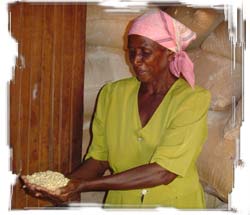 In the war against drought each victory is very hard-fought. Stress tolerant maize will make a difference.
In the war against drought each victory is very hard-fought. Stress tolerant maize will make a difference.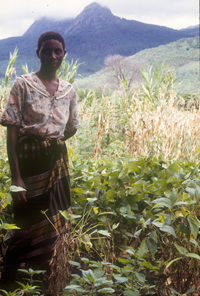 CIMMYT has entered into a collaborative research program to increase household and regional food security and incomes, as well as economic development, in eastern and southern Africa, through improved productivity from more resilient and sustainable maize-legume farming systems. Known as “Sustainable intensification of maize-legume cropping systems for food security in eastern and southern Africa” (SIMLESA), the program aims to increase productivity by 30% and reduce downside risk by 30% within a decade for at least 0.5 million farm households in those countries, with spill-over benefits throughout the region. In addition to CIMMYT, the program involves the
CIMMYT has entered into a collaborative research program to increase household and regional food security and incomes, as well as economic development, in eastern and southern Africa, through improved productivity from more resilient and sustainable maize-legume farming systems. Known as “Sustainable intensification of maize-legume cropping systems for food security in eastern and southern Africa” (SIMLESA), the program aims to increase productivity by 30% and reduce downside risk by 30% within a decade for at least 0.5 million farm households in those countries, with spill-over benefits throughout the region. In addition to CIMMYT, the program involves the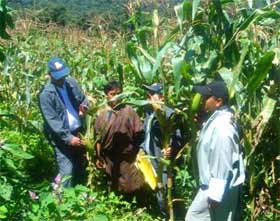 Sandwiched between China and India, the Kingdom of Bhutan is a small country that relies on maize in a big way. But maize yields are typically low due to crop diseases, drought, and poor access to seed of improved varieties, among other reasons. CIMMYT is committed to improving Bhutan’s food security by providing high-yielding, pest-resistant maize varieties to farmers and capacity-building for local scientists.
Sandwiched between China and India, the Kingdom of Bhutan is a small country that relies on maize in a big way. But maize yields are typically low due to crop diseases, drought, and poor access to seed of improved varieties, among other reasons. CIMMYT is committed to improving Bhutan’s food security by providing high-yielding, pest-resistant maize varieties to farmers and capacity-building for local scientists.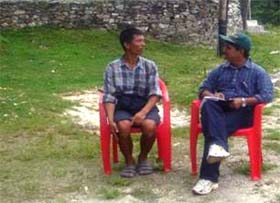
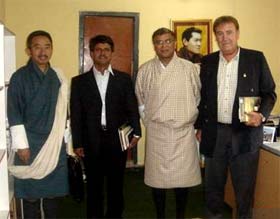 “Our CIMMYT office in Nepal has assisted Bhutan with maize and wheat genetic material, technical backstopping, training, visiting scientist exchange, and in identifying key consultants on research topics such as grey leaf spot and seed production,” says Tiwari.
“Our CIMMYT office in Nepal has assisted Bhutan with maize and wheat genetic material, technical backstopping, training, visiting scientist exchange, and in identifying key consultants on research topics such as grey leaf spot and seed production,” says Tiwari.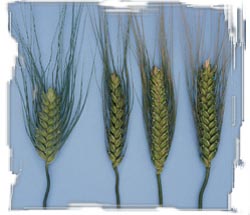 New study shows genetic diversity in CIMMYT wheat now as high as it was before the Green Revolution.
New study shows genetic diversity in CIMMYT wheat now as high as it was before the Green Revolution.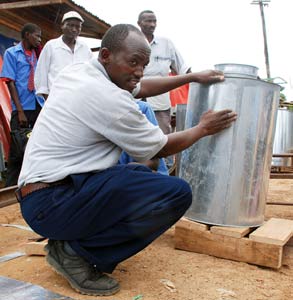 Six mouths are a lot to feed so Pamela Akoth, a 39-year-old Kenyan farmer and mother to half a dozen children, doesn’t want any weevils or borers—two of the most common post-harvest pests—nibbling at her grain supply. Akoth grows maize on 0.7 hectares in Homa Bay, western Kenya. In the past, she stored her grain in a traditional granary: a structure built with mud, branches, and cow dung that allows free entry to the maize weevil and the larger grain borer, the two most damaging pests of stored maize in Africa. Infestation starts in the field and continues after harvest when grain is stored. Losses of 10-20% are reported three months after storage, and this goes up to more than 50% after six months.
Six mouths are a lot to feed so Pamela Akoth, a 39-year-old Kenyan farmer and mother to half a dozen children, doesn’t want any weevils or borers—two of the most common post-harvest pests—nibbling at her grain supply. Akoth grows maize on 0.7 hectares in Homa Bay, western Kenya. In the past, she stored her grain in a traditional granary: a structure built with mud, branches, and cow dung that allows free entry to the maize weevil and the larger grain borer, the two most damaging pests of stored maize in Africa. Infestation starts in the field and continues after harvest when grain is stored. Losses of 10-20% are reported three months after storage, and this goes up to more than 50% after six months.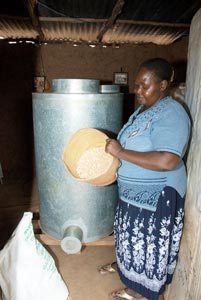 Local manufactureres cash in on silo demand
Local manufactureres cash in on silo demand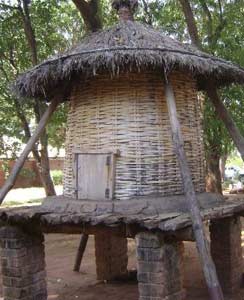 “I have used the silos for several years now, and I am convinced that this is the best method to store grain,” Sister Barbara says. “With other storage methods, we would lose up to 90% of our stored grain—now we lose nothing.” Schools have been early adopters of metal silos because many grow and store grain year-long to feed their students.
“I have used the silos for several years now, and I am convinced that this is the best method to store grain,” Sister Barbara says. “With other storage methods, we would lose up to 90% of our stored grain—now we lose nothing.” Schools have been early adopters of metal silos because many grow and store grain year-long to feed their students.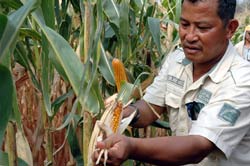 At the Thai Department of Agriculture’s Nakhon Sawan Field Crops Research Center, Pichet Grudloyma, senior maize breeder, shows off the drought screening facilities. Screening is carried out in the dry season, so that water availability can be carefully controlled in two comparison plots: one well-watered and one “drought” plot, where watering is stopped for two weeks before and two weeks after flowering. Many of the experimental lines and varieties being tested this year are here as the result of the Asian Maize Network (AMNET). Funded by the
At the Thai Department of Agriculture’s Nakhon Sawan Field Crops Research Center, Pichet Grudloyma, senior maize breeder, shows off the drought screening facilities. Screening is carried out in the dry season, so that water availability can be carefully controlled in two comparison plots: one well-watered and one “drought” plot, where watering is stopped for two weeks before and two weeks after flowering. Many of the experimental lines and varieties being tested this year are here as the result of the Asian Maize Network (AMNET). Funded by the 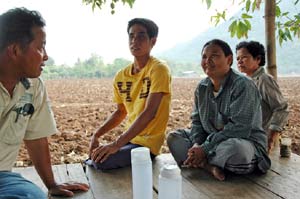 For Grudloyma, this collaborative approach is a big change. “We’ve learned a lot and gained a lot from our friends in different countries. We each have different experiences, and when we share problems we can adapt knowledge from others to our own situations.”
For Grudloyma, this collaborative approach is a big change. “We’ve learned a lot and gained a lot from our friends in different countries. We each have different experiences, and when we share problems we can adapt knowledge from others to our own situations.”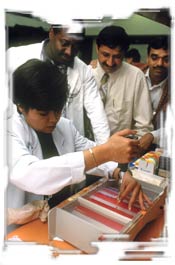 A USAID-funded study by Rutgers economist Carl Pray concludes that present and future impacts of the Asian Maize Biotechnology Network (AMBIONET)—a forum that during 1998-2005 fostered the use of biotechnology to boost maize yields in Asia’s developing countries—should produce benefits that far exceed its cost.
A USAID-funded study by Rutgers economist Carl Pray concludes that present and future impacts of the Asian Maize Biotechnology Network (AMBIONET)—a forum that during 1998-2005 fostered the use of biotechnology to boost maize yields in Asia’s developing countries—should produce benefits that far exceed its cost.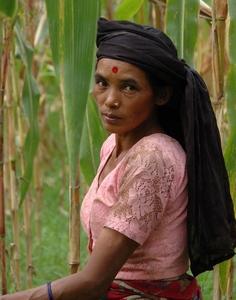 More than two decades of joint efforts between researchers from Nepal and CIMMYT have helped boost the country’s maize yields 36% and those of wheat by 85%, according to a report compiled to mark the 25th anniversary of the partnership. As a result, farmers even in the country’s remote, mid hill mountain areas have more food and brighter futures.
More than two decades of joint efforts between researchers from Nepal and CIMMYT have helped boost the country’s maize yields 36% and those of wheat by 85%, according to a report compiled to mark the 25th anniversary of the partnership. As a result, farmers even in the country’s remote, mid hill mountain areas have more food and brighter futures.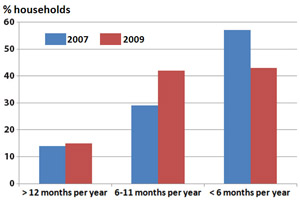
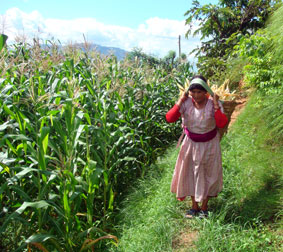 During 1997-2008,
During 1997-2008,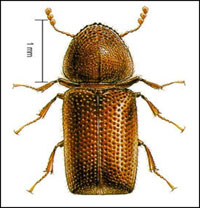 The larger grain borer is taking a beating from CIMMYT breeders in Kenya as new African maize withstands the onslaught of one of the most damaging pests.
The larger grain borer is taking a beating from CIMMYT breeders in Kenya as new African maize withstands the onslaught of one of the most damaging pests.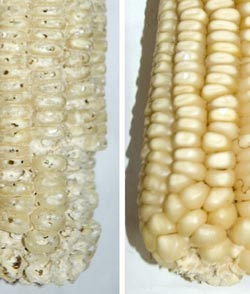 Even in Latin America, where it has co-evolved with natural predators, losses are significant. In Africa, where there are no similar predators to control the insect, its spread has been most dramatic. Attempts to introduce some of those predators to Africa to control the borer (a technique called biological control) have met with limited success and regionally concerted action is essential if biological control is to be effective across borer-infested areas. Researchers also studied the habits of the borer, hoping to find ways to reduce the damage it does. They discovered that it needs a solid platform, such as that provided by maize kernels still on the cob, before it will bore into a kernel. Unfortunately African farmers often store maize on the cob, increasing the potential for borer damage. By shelling the maize and storing the kernels off the cob, the damage can be reduced by small amounts, but losses are still very high. This is what makes the development of new varieties, where the resistance lies in the seed, so exciting.
Even in Latin America, where it has co-evolved with natural predators, losses are significant. In Africa, where there are no similar predators to control the insect, its spread has been most dramatic. Attempts to introduce some of those predators to Africa to control the borer (a technique called biological control) have met with limited success and regionally concerted action is essential if biological control is to be effective across borer-infested areas. Researchers also studied the habits of the borer, hoping to find ways to reduce the damage it does. They discovered that it needs a solid platform, such as that provided by maize kernels still on the cob, before it will bore into a kernel. Unfortunately African farmers often store maize on the cob, increasing the potential for borer damage. By shelling the maize and storing the kernels off the cob, the damage can be reduced by small amounts, but losses are still very high. This is what makes the development of new varieties, where the resistance lies in the seed, so exciting.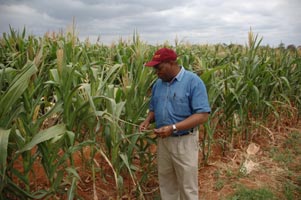 CIMMYT researchers found resistance to the borer in the Center’s germplasm bank, in maize seed originally from the Caribbean. The bank holds 25,000 unique collections of native maize races. By using conventional plant breeding techniques, crossing those plants with maize already adapted to the conditions found in eastern Africa, Mugo and the breeding team were able to combine the resistance of the Caribbean maize with the key traits valued by Kenyan maize farmers. The maize was tested for resistance at the KARI research station in Kiboko, Kenya. Larger grain borers were placed in glass jars with a known weight of maize. Weight changes to the maize and a visual assessment of damage were recorded, allowing researchers to select the best lines. The result is new maize varieties that will benefit farmers in Kenya and help reduce Kenya’s dependence on imported maize for national food security.
CIMMYT researchers found resistance to the borer in the Center’s germplasm bank, in maize seed originally from the Caribbean. The bank holds 25,000 unique collections of native maize races. By using conventional plant breeding techniques, crossing those plants with maize already adapted to the conditions found in eastern Africa, Mugo and the breeding team were able to combine the resistance of the Caribbean maize with the key traits valued by Kenyan maize farmers. The maize was tested for resistance at the KARI research station in Kiboko, Kenya. Larger grain borers were placed in glass jars with a known weight of maize. Weight changes to the maize and a visual assessment of damage were recorded, allowing researchers to select the best lines. The result is new maize varieties that will benefit farmers in Kenya and help reduce Kenya’s dependence on imported maize for national food security. A USAID-funded study by Williams College economist Douglas Gollin shows that modern maize and wheat varieties not only increase maximum yields in developing countries, but add hundreds of millions of dollars each year to farmers’ incomes by guaranteeing more reliable yields than traditional varieties.
A USAID-funded study by Williams College economist Douglas Gollin shows that modern maize and wheat varieties not only increase maximum yields in developing countries, but add hundreds of millions of dollars each year to farmers’ incomes by guaranteeing more reliable yields than traditional varieties.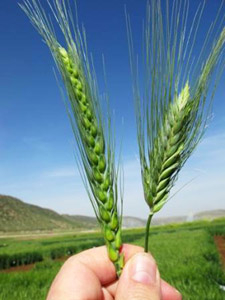 In order to contribute to world food security, the International Research Initiative for Wheat Improvement (IRIWI), supported by research organisations and funding agencies from about ten countries, has been adopted by the Ministers of Agriculture of the G20. INRA, with the Biotechnology and Biological Sciences Research Council (UK) and the International Maize and Wheat Improvement Center (CIMMYT, Mexico), will contribute to the coordination activities of the IRIWI during the first four years of the project.
In order to contribute to world food security, the International Research Initiative for Wheat Improvement (IRIWI), supported by research organisations and funding agencies from about ten countries, has been adopted by the Ministers of Agriculture of the G20. INRA, with the Biotechnology and Biological Sciences Research Council (UK) and the International Maize and Wheat Improvement Center (CIMMYT, Mexico), will contribute to the coordination activities of the IRIWI during the first four years of the project.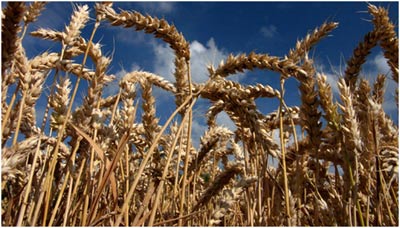
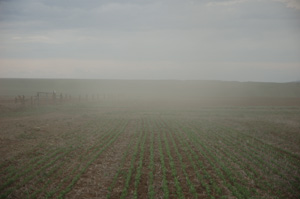 Zero-tillage trials in rainfed, winter wheat-fallow systems show smallholder farmers on the Anatolian Plains a way to double their harvests.
Zero-tillage trials in rainfed, winter wheat-fallow systems show smallholder farmers on the Anatolian Plains a way to double their harvests.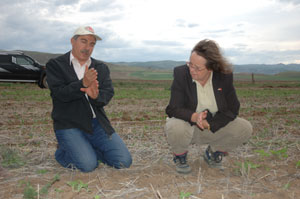
 Retired agronomist Mufit Kalayci, recently brought back to the Anatolian Agricultural Research Center in Eskisiher, Turkey, to mentor a new team, sees the value of zero-tillage in intensive, irrigated systems with more than a single crop per year, but is skeptical about using it with traditional rainfed wheat farms. “I don’t think you can retain enough moisture over the fallow period.” he says. For that reason, one of the goals of the zero-tillage experiment was to see if a second crop other than weeds could be grown during the fallow season. This question will be answered in coming years.
Retired agronomist Mufit Kalayci, recently brought back to the Anatolian Agricultural Research Center in Eskisiher, Turkey, to mentor a new team, sees the value of zero-tillage in intensive, irrigated systems with more than a single crop per year, but is skeptical about using it with traditional rainfed wheat farms. “I don’t think you can retain enough moisture over the fallow period.” he says. For that reason, one of the goals of the zero-tillage experiment was to see if a second crop other than weeds could be grown during the fallow season. This question will be answered in coming years.